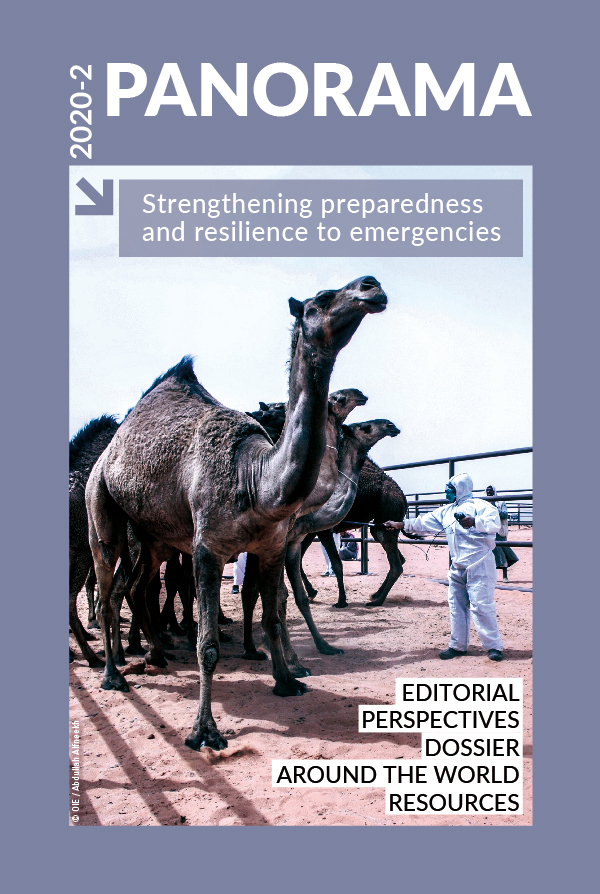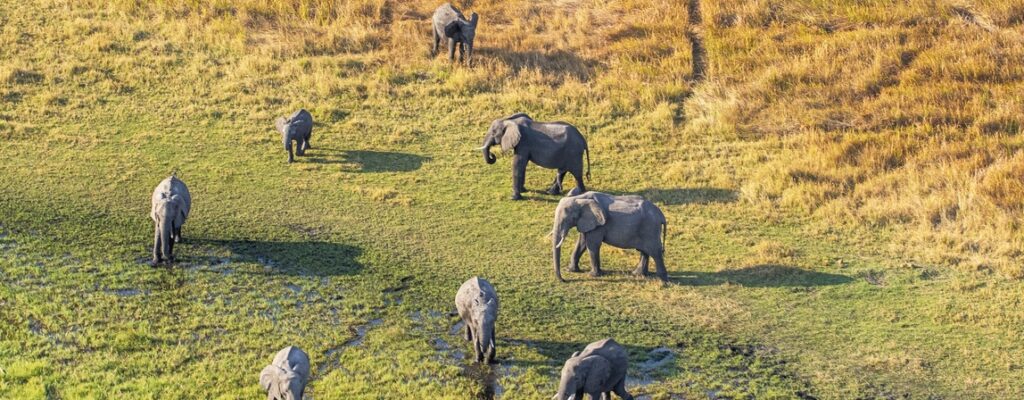Perspectives Posted on 2021-03-08 08:49:23
OIE actions
The OIE response to COVID-19
What does COVID-19 have to do with animal health? And what has the OIE been doing?
Keywords
Authors
K. Hamilton (1) & M. Marrana (1)*
(1) Preparedness and Resilience Department, World Organisation for Animal Health (OIE).
* Corresponding author: m.marrana@oie.int
As early as January 2020, the World Organisation for Animal Health (OIE) started to communicate on the implications of SARS-CoV-2 at the human−animal interface.
SARS-CoV-2 infection in animals is reportable to the OIE
Since SARS-CoV-2 infection in animals is reportable to the OIE as an ‘emerging disease’, the OIE has been sharing the latest findings through a dedicated web page. The OIE continues to provide guidance on research priorities in accordance with the World Health Organization (WHO) R&D Blueprint for COVID-19, which details surveillance and preventative measures to avoid further spillover from humans to animals and vice versa. The OIE’s advice aims to inform risk communication.
The OIE has issued guidance and advice for veterinary diagnosticians, officials and practitioners
The success that some countries have had in flattening the epidemic curve was influenced by their ability to rapidly deploy mass testing of suspected human cases. In several of these countries, veterinary laboratories played an important frontline role in supporting their public health partners to meet the surge in demand by testing human samples. Veterinary laboratories are well set up to do this because they are used to ‘scaling up’ testing capacity for animal disease outbreaks. In collaboration with WHO, the OIE compiled lessons learned from veterinary laboratories involved in the public health response to COVID-19, and developed and disseminated guidance to help and encourage other veterinary laboratories to support the response [3]. Veterinary Services supported the public health response in other ways too; by providing much-needed equipment (when there were shortages), contributing epidemiology expertise, and facilitating inter-agency cooperation at border entry points. In addition to issuing guidance for veterinary laboratories, the OIE has issued advice for Veterinary Services and veterinary practitioners. This covers the sampling, testing and reporting of SARS-CoV-2 in animals [4] and considerations on the application of sanitary measures for international trade related to COVID-19 [5].
In the longer term, Veterinary Services must play a central role in reducing the risks of future pandemics by assessing the risks of disease emergence from animals, including wildlife, and managing those risks through better surveillance and regulation of high-risk practices, and enforcement. The OIE is developing an ambitious, transformative programme of work to reduce the risk of future pandemics from disease spillover events and aims to build a comprehensive wildlife health risk management core programme.
| OIE Web Portal on COVID-19 |
http://dx.doi.org/10.20506/bull.2020.2.3144
References
- Zhou Peng, Yang Xing-Lou, Wang Xian-Guang, Hu Ben, Zhang Lei, Zhang Wei, Si Hao-Rui, Zhu Yan, Li Bei, Huang Chao-Lin, Chen Hui-Dong, Chen Jing, Luo Yun, Guo Hua, Jiang Ren-Di, Liu Mei-Qin, Chen Ying, Shen Xu-Rui, Wang Xi, Zheng Xiao-Shuang, Zhao Kai, Chen Quan-Jiao, Deng Fei, Liu Lin-Lin, Yan Bing, Zhan Fa-Xian, Wang Yan-Yi, Xiao Geng-Fu & Shi Zheng-Li (2020). – A pneumonia outbreak associated with a new coronavirus of probable bat origin. Nature, 579, 270–273. https://doi.org/10.1038/s41586-020-2012-7.
- Damas Joana, Hughes Graham M., Keough Kathleen C., Painter Corrie A., Persky Nicole S., Corbo Marco, Hiller Michael, Koepfli Klaus-Peter, Pfenning Andreas R., Zhao Huabin, Genereux Diane P., Swofford Ross, Pollard Katherine S., Ryder Oliver A., Nweeia Martin T., Lindblad-Toh Kerstin, Teeling Emma C., Karlsson Elinor K. & Lewin Harris A. (2020). – Broad host range of SARS-CoV-2 predicted by comparative and structural analysis of ACE2 in vertebrates. Proc. Natl Acad. Sci. USA, 117 (36), 22311–22322. https://doi.org/10.1073/pnas.2010146117.
- World Organisation for Animal Health (OIE) (2020). – Veterinary laboratory support to the public health response for COVID-19. Testing of human diagnostic specimens in veterinary laboratories.
- World Organisation for Animal Health (OIE) (2020). – Considerations for sampling, testing, and reporting of SARS-CoV-2 in animals.
- World Organisation for Animal Health (OIE) (2020). – OIE considerations on the application of sanitary measures for international trade related to COVID-19.












